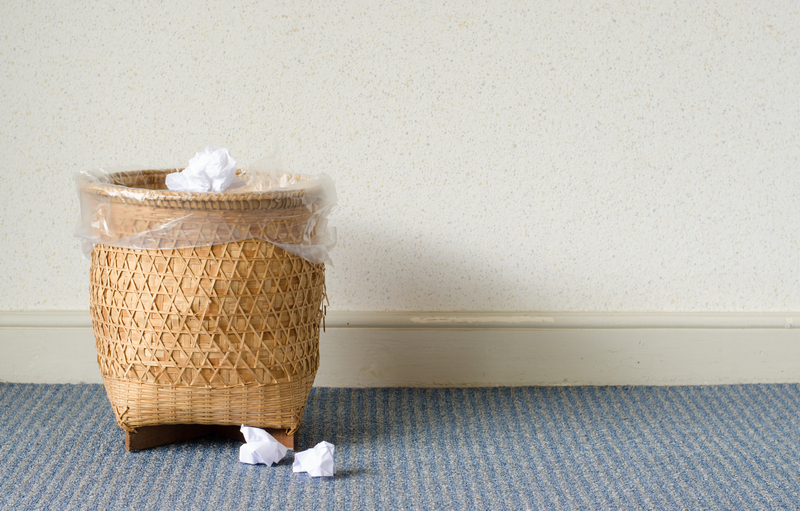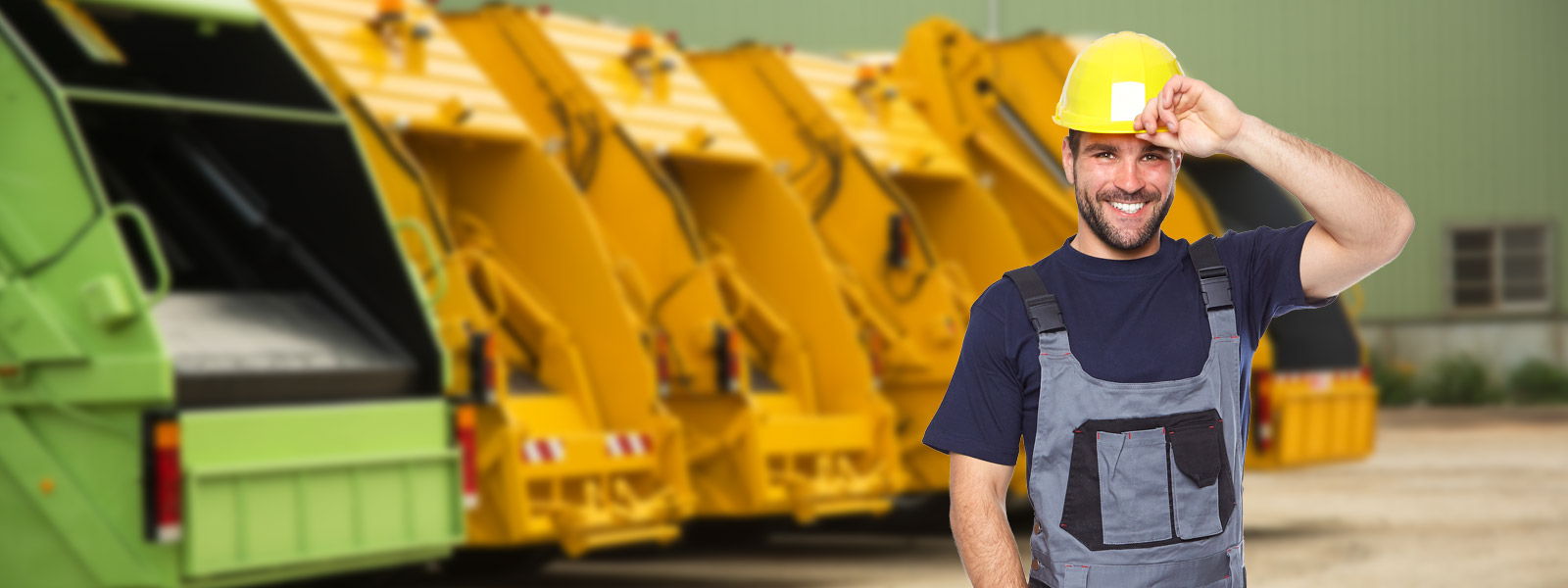Creative Solutions for Lowering Home Waste
Posted on 26/08/2025
Creative Solutions for Lowering Home Waste
Reducing home waste doesn't have to be a chore. Today, more than ever, creative solutions for lowering home waste are not only accessible but also enjoyable. Understanding and implementing practical strategies ensures a sustainable environment and saves money. In this comprehensive article, we'll explore multiple innovative ways to produce less waste at home, so you can make a meaningful impact.

Understanding Home Waste: Why Reduction Matters
The average household generates a staggering amount of waste each year. According to the Environmental Protection Agency, Americans alone produce over 250 million tons of trash annually. **Landfills are filling up faster than ever**, causing pollution, greenhouse gas emissions, and a strain on natural resources. Lowering home waste is crucial for:
- Conserving raw materials
- Minimizing landfill space
- Reducing greenhouse gas exposure
- Protecting wildlife and ecosystems
Embarking on a journey to reduce household waste means championing creative, eco-friendly practices every day.
Start With an Audit: Know What You Throw
Before implementing change, it's essential to analyze your household waste. Spend a week tracking everything that you and your family discard. Categorize these items: plastics, food, paper, clothing, and electronics. This practical approach helps identify specific areas for improvement. For example, if food scraps dominate your trash, it's time to focus on creative solutions for food waste reduction at home.
Quick Steps for a Home Waste Audit
- Collect all waste for 7 days
- Categorize items into recyclables, compost, landfill, and donations
- Evaluate which category fills up the fastest
- Set goals to lower output in each category
Creative Ways to Reduce Food Waste at Home
Food waste is a major contributor to overall household garbage. However, embracing creative strategies can dramatically reduce how much food you toss out.
1. Meal Planning and Smart Shopping
A weekly meal plan prevents impulse buying, reduces spoilage, and ensures you use what you purchase.
- Make a shopping list based on your planned meals
- Stick to the list and avoid bulk purchasing perishable goods
- Rotate pantry and fridge items to use older items first
2. Creative Leftovers and Food Repurposing
Instead of viewing leftovers as boring, see them as ingredients for new dishes. For example:
- Bake leftover veggies into casseroles or quiches
- Convert stale bread into croutons or breadcrumbs
- Blend overripe fruits into smoothies or bake them into muffins
3. Embrace Home Composting
Composting transforms food scraps into nutrient-rich soil for gardens. Even if you lack a yard, vermicomposting--using worms--provides a compact, indoor option. Popular compostable items include:
- Fruit and vegetable peels
- Coffee grounds and tea bags
- Eggshells
- Paper towels (unbleached)
Innovative Solutions to Minimize Packaging Waste
Packaging--especially plastics--is a significant source of home waste. Embracing creative solutions for lowering packaging waste involves small but effective changes in shopping habits and storage.
1. Bulk Buying and Refill Stations
Many communities now offer refill shops or bulk stores where you can fill up your own containers. This approach:
- Eliminates single-use packaging
- Lets you buy exactly the amount needed, preventing excess
- Encourages the reuse of glass jars, cloth bags, or metal tins
2. Choose Minimal and Recyclable Packaging
Prioritize products that offer minimal or recyclable packaging. Look for paper, cardboard, or compostable materials over plastic or styrofoam. Additionally, some brands offer return and refill programs for containers--encourage your favorite brands to participate!
3. DIY Household Products
Many cleaning and personal care products can be easily made at home, cutting down drastically on packaging. Popular DIY items include:
- Multi-purpose cleaning sprays using vinegar and citrus peels
- Soap bars in place of liquid soap bottles
- Homemade body scrubs or toothpaste
Creative Approaches to Paper and Plastic Reduction
1. Go Paperless Whenever Possible
In our digital era, many paper items are easily replaced. Switch to:
- e-bills and digital banking
- online magazines and newspapers
- reusable whiteboards or apps for notes and lists
2. Re-use and Upcycle Creative Crafts
Instead of discarding old newspapers, cardboard, and plastic containers, turn them into creative projects:
- DIY storage boxes and organizers
- Homemade greeting cards and gift tags
- Art supplies for children
3. Invest in Reusables
Some swaps make a huge difference over time, such as:
- Cloth napkins and towels instead of disposables
- Reusable water bottles and coffee cups
- Silicone storage bags and beeswax wraps for food
Textile and Clothing Waste: Rethink, Reuse, Recycle
An often-overlooked source of home waste is textiles. With fast fashion on the rise, clothing often ends up in landfills prematurely. Here's how to adopt creative solutions for reducing home textile waste:
- Host Clothing Swaps: Gather friends and neighbors for a swap. Unloved items get a new life, and you may find a new favorite piece!
- Upcycle or Repair: Learn simple repairs like sewing buttons or patching holes. Upcycle old shirts into cleaning rags, tote bags, or quilts.
- Donate Responsibly: Only donate wearable, clean clothes. For unwearable items, check local recycling centers that accept textiles for industrial rags or insulation.
Creative Home Decor with Repurposed Textiles
Turn worn clothing or linens into:
- Pillow covers
- Quilts and patchwork blankets
- Braided rugs and baskets
E-Waste Reduction and Responsible Disposal
Electronic waste is one of the fastest-growing waste streams globally. A key solution for reducing e-waste at home is prolonging the life of electronics:
- Repair and upgrade devices instead of replacing them
- Donate working electronics to charities or schools
- Use certified e-waste recyclers for broken gadgets
Diminishing e-waste not only conserves valuable materials but also prevents toxic substances from polluting the environment.
Advanced and Tech-Inspired Creative Waste Solutions
Smart Home Gadgets to Monitor Waste
Technology isn't just for convenience; it can help manage waste. Some smart bins use weigh scales or sensors to alert users when they're about to generate excessive waste, while apps track consumption and suggest improvements. Leveraging smart tech makes it easier than ever to adopt creative ways to cut home waste.
Online Communities and Sharing Networks
- Freecycle and Buy Nothing Groups: These grassroots networks allow you to gift or find items--furniture, electronics, toys--heading for landfill but ready for a second life.
- Tool Libraries: Borrow tools rather than purchase single-use equipment, lowering both clutter and waste.
Participating in sharing economies strengthens communities and encourages sustainable habits, dramatically lowering household waste output.
Educational Approaches: Raising Awareness and Involving All Ages
*Change begins with education*. Foster an environment where everyone at home--children included--understands and embraces sustainable habits.
- Encourage kids to sort waste and participate in upcycling crafts
- Share documentaries and books on environmental sustainability
- Host friendly family competitions for who can reduce the most waste
Tips for Staying Motivated & Consistent
Introducing new routines can be challenging. To help make your home waste reduction solutions stick:
- Set achievable goals and track progress
- Celebrate small victories--every bit counts!
- Connect with neighbors or online groups for support and inspiration

The Benefits of Creative Waste Reduction
Lowering household waste creatively brings multiple rewards:
- Environmental impact: Less landfill, reduced pollution, and healthier ecosystems.
- Personal savings: Buying less and making the most of what you have keeps money in your pocket.
- Community: Building connections with shared goals--whether through swaps, tool libraries, or neighborhood composting.
- Personal fulfillment: Discover new hobbies, skills, and the satisfaction of making a difference.
Conclusion: Your Role in Creative Waste Management
At its core, embracing creative solutions for lowering home waste is about resourcefulness, mindfulness, and innovation. Every small action adds up--when each household commits to creative waste reduction ideas, the impact is profound. Start with a few changes and watch your waste stream shrink. Your home, your wallet, and the planet all stand to benefit!
Implement these creative and practical strategies to pave the way for a cleaner, greener, and more enjoyable living space. The journey to lower home waste is rewarding, impactful, and--most importantly--possible for everyone.
 House clearance
House clearance Rubbish collection
Rubbish collection








 020 3744 6462
020 3744 6462 020 3744 6462
020 3744 6462


